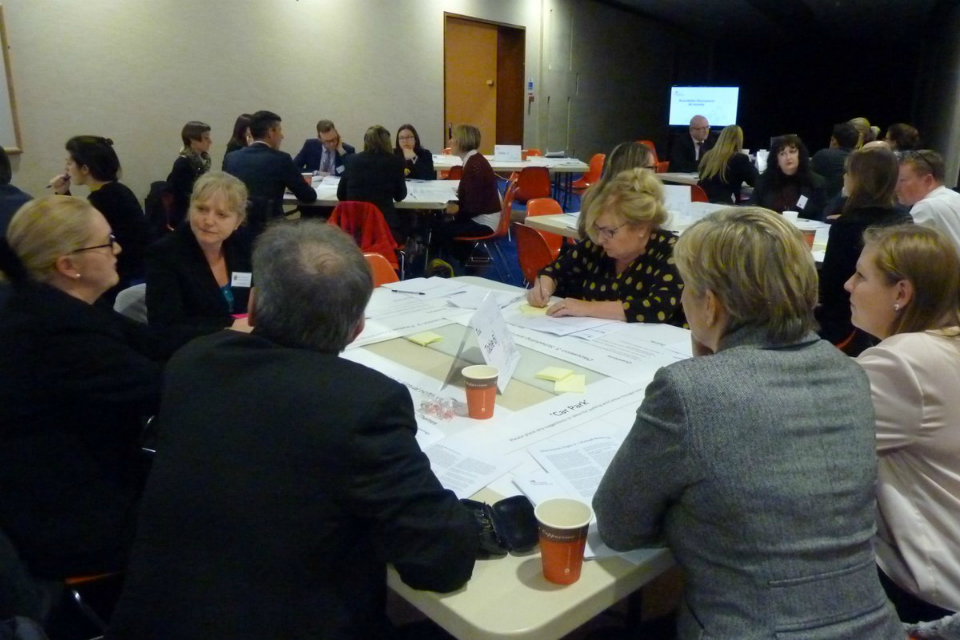Thank you Mr President.
I would like to thank the Prosecutor for her 27th report on the situation in Darfur pursuant to Security Council resolution 1593 (2005), and for her briefing today. I would also like to commend her and her staff for their hard work and their dedication to these investigations.
The ICC has an important role to play in global efforts to end impunity for the most serious crimes of international concern and the United Kingdom fully supports its efforts to hold perpetrators to account and achieve justice for victims. We understand how difficult these investigations are proving to be for the prosecutor and her team and how disheartening that can be, but we encourage them to maintain their current level of commitment, as the victims and witnesses deserve nothing less.
Whilst the UK welcomes reductions in armed conflict between government forces and the armed opposition, we are concerned by the ongoing clashes between the Sudan Liberation Army – Abdel Wahid (SLA-AW) and government forces in the Jebel Marra region. Reports of villages being burnt, aerial bombardments, civilian casualties and displacements are particularly troubling. It is unacceptable that the Government of Sudan has prevented UNAMID and humanitarian actors from accessing areas of recent conflict, and we call on the Government to provide unfettered access immediately.
As the security situation shows signs of improvements in some parts of Darfur, small numbers of internally displaced persons are beginning to return to their area of origin. However many of these returns are short-lived and precarious due to localised insecurity, the occupation of lands by militias and the absence of basic services, and we note that the Prosecutor’s office is highly concerned for the fate of some of these IDPs. We are also concerned that the situation is particularly perilous for female IDPs given the ongoing prevalence of sexual and gender-based violence. The Government of Sudan, with the support of UNAMID and international donors, must focus its efforts on creating the conditions necessary for the safe and voluntary return of all IDPs, in accordance with applicable international law, as required by Security Council resolution 2363 (2017).
The continued lack of progress in the peace process is a cause for significant frustration. We urge all parties to engage meaningfully and to focus their efforts on implementing the African Union High Level Implementation Panel (AUHIP) Roadmap. Linked to this, the Government must ensure the protection of fundamental human rights, including freedom of expression and freedom of association, in order to create an environment conducive to political dialogue and democratic reform.
Mr President,
In adopting UN Security Council resolution 1593, this Council committed to support the Office of the Prosecutor in its efforts to investigate the situation in Darfur. We must therefore act upon the Prosecutor’s request to the Council to take effective measures to enable the Court to carry out its mandate in Darfur, in particular asserting the need for all States to cooperate with the Office’s investigations. In this regard, the United Kingdom looks forward to the Arria-formula meeting on UN Security Council-ICC relations on 6 July initiated by The Netherlands and co-sponsored by the UK and others. We encourage our fellow Member States to engage constructively with this meeting and to consider carefully what more we, as a Council, can do to ensure that the Court receives the necessary support. The United Kingdom joins those States which believe that the Council should consider steps that it might take to address non-compliance findings by the Court when these are referred to the Council by the Court’s judges.
In this connection, the UK again calls on the Government of Sudan to fulfil its legal obligations pursuant to resolution 1593, to cooperate fully with the Court, and to arrest and surrender the suspects to it without further delay.
Mr President,
The United Kingdom continues to be frustrated that fugitives of the Court, including President Al-Bashir, Mr Harun and Mr Hussein, are still travelling to certain countries unhindered. For our part, the United Kingdom will continue to raise our concerns with the relevant governments, including through the European Union. We renew our call to all States Parties to cooperate with the ICC and abide by their obligations under the Rome Statute. We also urge them to consult the Court if they feel that they are unable to co-operate with it for any reason.
Finally Mr President,
We again thank the Office of the Prosecutor for its continued commitment to pursuing these investigations and achieving justice for victims in Darfur, despite the fragile security situation, access restrictions and lack of cooperation. We urge them to continue with this important work.
Thank you Mr President.
